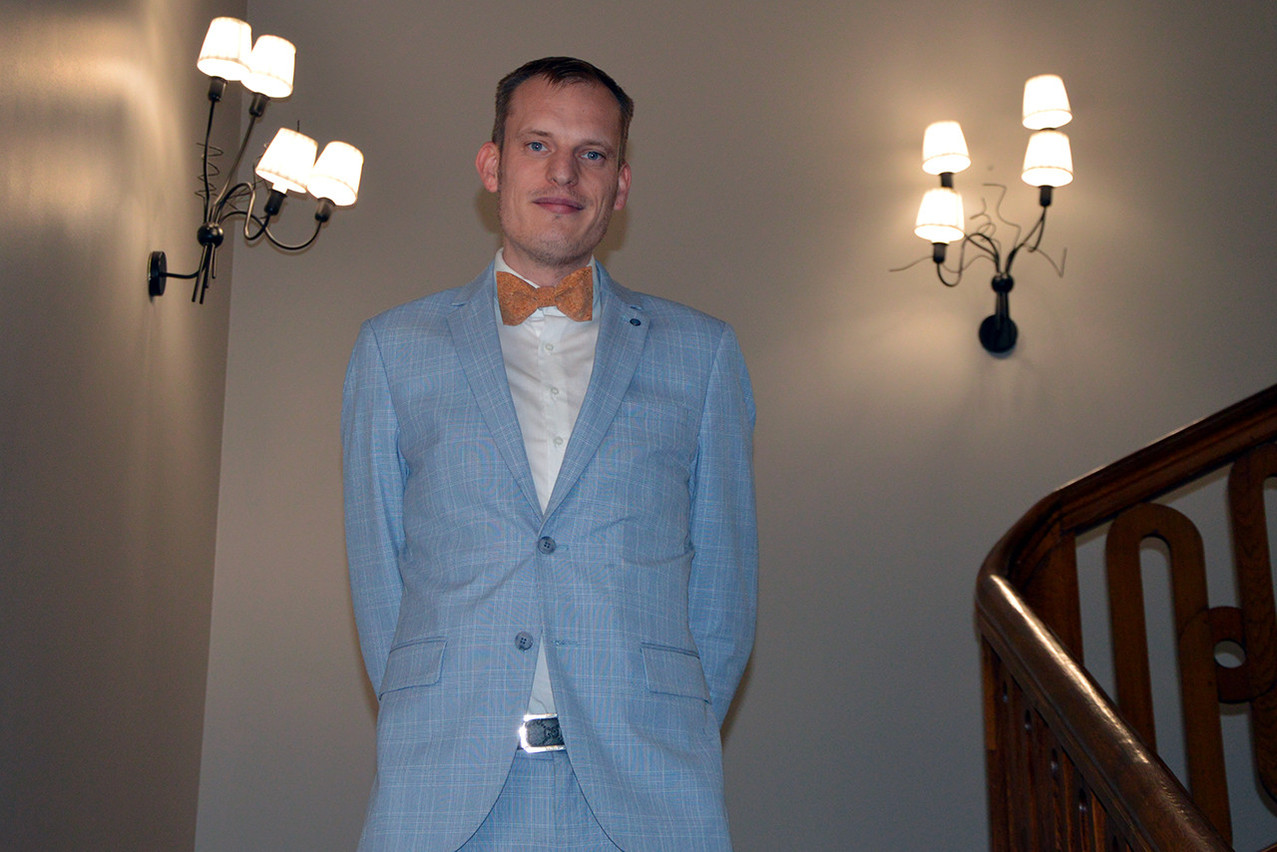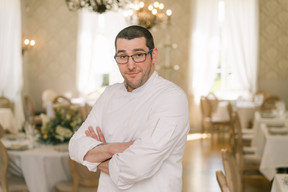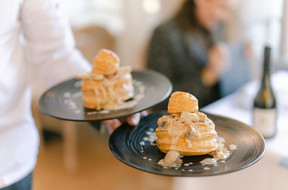“I’m passionate about the art of entertaining, I like to see people having fun,” confides Jean-Baptiste Marx, proud to have reawakened a site that many people thought was permanently dormant. Yet nothing predestined him to write a new chapter for this listed monument, which had been unoccupied since 2016.
It was almost by chance that he discovered the place. “Originally, I was looking for a simple warehouse for one of my activities,” he says. “An estate agent from the Guy Rollinger Group asked me: ‘Wouldn’t you be interested in a château?’” Intrigued, Marx agreed to the visit. What followed was love at first sight: “As soon as I walked through the gates, I felt like I was entering Sleeping Beauty’s castle. I felt an energy that I’d never experienced before.”
Behind the rusty gates and weathered walls, Marx can already see the receptions, the laughter, the festive weekends. “I know what customers expect. This place ticked all the boxes.” The entrepreneur financed his gamble alone, selling everything he owned, right down to his car. “I had a number of events companies, all of which were destroyed by covid. I had to start all over again.” No bank financing, no public aid. The Rollinger group, who had been the owner since 2020, agreed to sell him the site under a lease-purchase agreement.
A bold gamble
But the businessman believed in his intuition--and in this place, steeped in history. A fortified castle in the 14th century, it was transformed into a manor house in the 19th century by Jean-Nicolas Collart, then occupied by nuns before becoming a hotel and conference centre in the 2000s. It was deserted in 2016.
With 6,000m2 built and 18,000m2 of land, the potential is immense. “Today, 2,500m2 have been renovated [for around €400,000, editor’s note]. We’re taking things one step at a time. Every rushed project is a mistake,” says Marx. Since June 2024, the site has been hosting private and professional events. It has around twenty rooms, two suites--including a future “Guillaume suite” planned for the incoming grand duke’s investiture--several lounges, a tower in homage to Victor Hugo, a discotheque, a vaulted cellar, as well as a huge garden offering a breathtaking view of the Moselle.
The hotel and restaurant finally opened their doors over the Easter weekend, a symbolic date. “It was important for us to reconnect with the history of the place, which for a long time was home to a convent,” says Marx.
A friendly, accessible place
The philosophy? To offer a lively, open and accessible venue. Far from ultra-luxury, Château de Schengen offers a daily dish at €19.90. Several menus are available, including a starter-main course-dessert option for €39. “We wanted a friendly brasserie, not a stuffy place,” adds Marx. “A lot of tourists pass in front of the château, so we wanted to open our doors to them.” A short menu featuring local produce and seasonal cuisine: simplicity is the watchword.
Donovan Mathon, a 36-year-old chef from Burgundy, embodies this approach. “The simplest cuisine is often the most complex,” he says. “We don’t pretend to sell an incredible culinary experience. We just want people to have a good time.”
Today, the team counts twelve members--compared with four at the outset--between gardeners, room, dining room and kitchen staff. All come from the region or neighbouring countries. “The château is like Schengen: a meeting point between France, Luxembourg and Germany,” sums up Marx.
Luxembourg, a land of opportunity, represents a contrast for the manager with his family history. “Here, they push you to be an entrepreneur,” he says, making a comparison with his craftsman father in France, who ended his career “disgusted” with the system.
Clear-eyed about the challenges, Marx is moving forward in stages. On the drawing board: a glass roof transformed into a spa, a second, more upmarket dining room, and the renovation of all the gardens. “We have a whole life ahead of us. I’m 32 years old. When I see everything we’ve achieved in two years, I tell myself we still have time,” he concludes, determined.
This article was originally published in .
















